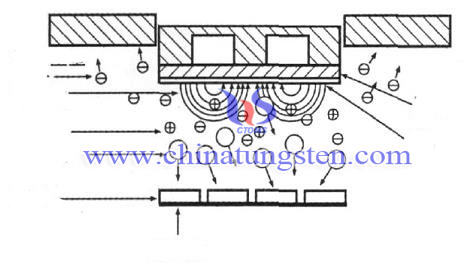Nitrogen-Doped Impact on Tungsten Trioxide Structure
- Details
- Category: Tungsten Information
- Published on Monday, 18 January 2016 17:27
Doping is an important method to improve the efficiency of light energy conversion of photocatalytic material. Numerous of studies show that the rare earth and metal ions by doping can significantly enhance the catalytic activity of the photocatalyst, however, it may lead the stability of metal-doped catalysts thermal to decrease and the introduction of photo-generated electron and hole recombination centers to reduce its optical conversion efficiency. Some non-metal-doped semiconductor material may improve their stability, electrical conductivity, and pass through between the conductive and leave with the formation of "middle level" and to improve the material efficiency of absorption of visible light.
Numerous of studies show that, the N-doped can significantly improve the absorption efficiency of TiO2, ZrO2, Ta2O5 and other semiconductor materials belong to visible light, the n-type semiconductor, the same can be improved by N-doped WO3-x of visible light absorption efficiency.
The nitrogen (N) doped tungsten trioxide photocatalyst (WO_ (3-x): N) is prepared by Sol-gel - ammonia oxygen atmosphere firing method. The structural properties of the samples were characterization and analysis by using SEM, XRD, XPS and DRS, comparing the experimental study of nitrogen doping on the tungsten trioxide photolysis aquatic oxygen catalytic activity. The results show that NH_3 / O_2 was mixed atmosphere at 500 ℃ , sintering it 3h , doping N, when N enters tungsten trioxide lattice, it does not change WO_ (3-x) polymorphs and morphology. WO_ (3-x ): N remains monoclinic crystal structure, and are a small amount of an unknown sample new phase that causes thinning size and lattice distortion increases while doping surface W ~ (4+) powder and increase the oxygen vacancy. Certain lattice defects and oxygen vacancies are in favor of catalyst response wavelength red shift. The rate of N average oxygen evolution reaches 66.8μmol / (L • g • h) under UV irradiation 12h, while the rate of photolysis under visible radiation water increase to 24.5% than non-doped sample.
| Tungsten Oxide Supplier: Chinatungsten Online www.tungsten-oxide.com | Tel.: 86 592 5129696; Fax: 86 592 5129797;Email:sales@chinatungsten.com |
| Tungsten News & Prices, 3G Version: http://3g.chinatungsten.com | Molybdenum News & Molybdenum Price: http://news.molybdenum.com.cn |